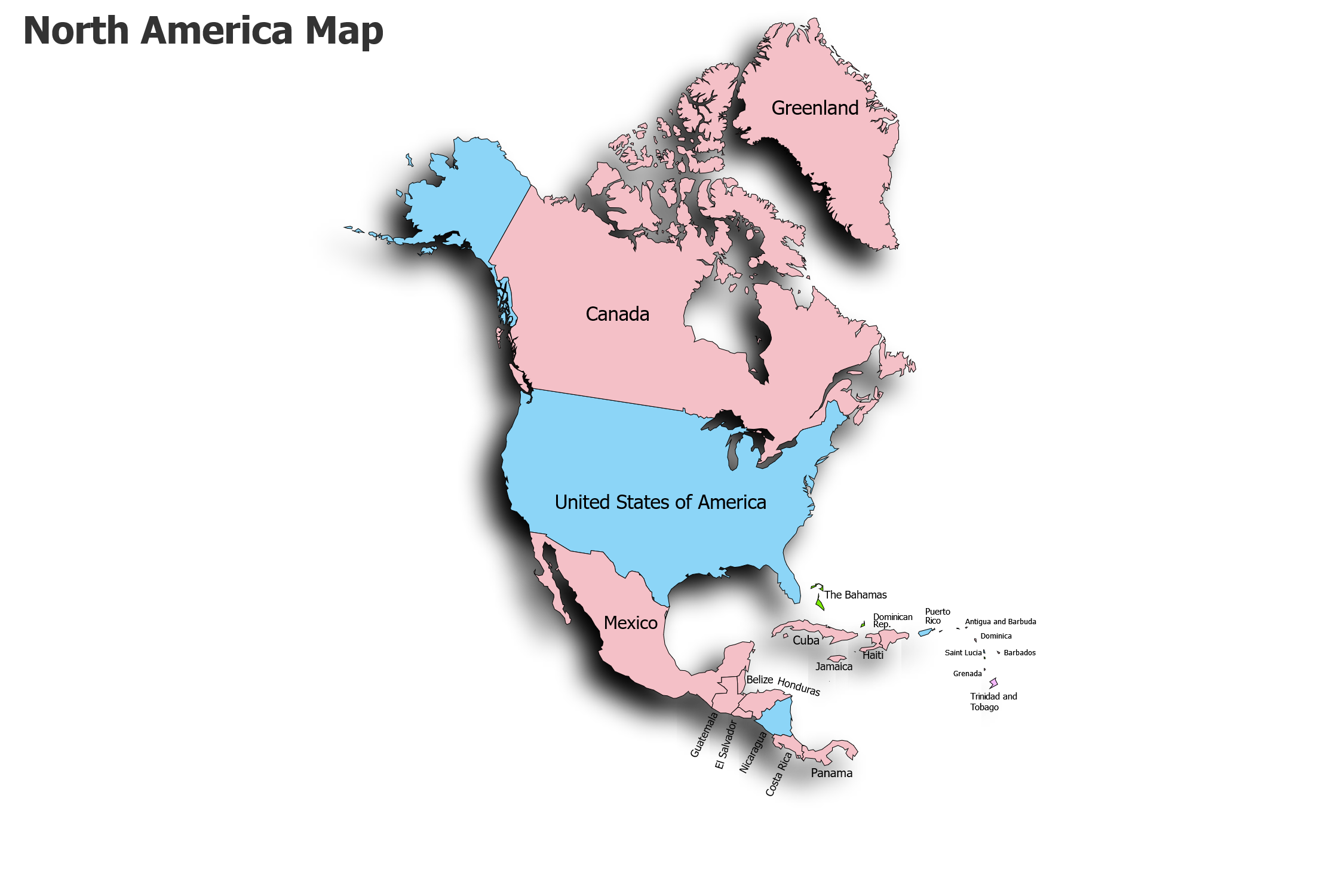North American Continent
A brief about North American continent

About North America
North America is a vast and bustling continent, known for its diverse cultures, landscapes, and histories. From the Arctic Ocean in the north to the Caribbean Sea in the south, North America spans a wide range of climates and ecosystems. With over 579 million people living in 23 countries, North America is home to a rich tapestry of traditions and innovations.
The continent is characterized by iconic landmarks such as the Grand Canyon, Yellowstone National Park, and the Statue of Liberty, as well as vibrant cities like New York, Los Angeles, and Toronto. North America's natural beauty and urban centers attract millions of visitors each year, offering a mix of breathtaking natural wonders and bustling city life.
Covering an area of approximately 24.7 million square kilometers, North America comprises about 16.5% of the world's total land area. Despite its vast size, North America is home to a relatively small percentage of the world's population, accounting for approximately 8% of the global population.
Countries and Land Area
North America's landmass is bordered by natural features such as oceans, seas, and mountain ranges. To the east, the Atlantic Ocean separates North America from Europe and Africa. The Pacific Ocean lies to the west, forming another natural boundary. The Arctic Ocean defines its northern edge, while the Gulf of Mexico and the Caribbean Sea delineate its southern border.
Spanning from the Arctic tundra in the north to the tropical rainforests of Central America in the south, North America encompasses a diverse range of landscapes and climates. Countries in North America include Canada, the United States, Mexico, and several smaller nations in Central America and the Caribbean.
The largest country in North America by land area is Canada, covering approximately 9.98 million square kilometers. In contrast, the smallest country, based on land area, is Saint Kitts and Nevis, a Caribbean nation covering just 261 square kilometers. Despite its size, North America's countries boast a wealth of natural beauty, cultural heritage, and economic significance.
Regions
The North American continent can be divided into regions such as:
- Northwest
- Southwest
- Great Plains
- Midwest
- Northeast
- Southeast
Languages
North America boasts a rich linguistic landscape, shaped by its diverse cultural heritage and history. While English stands as the predominant language spoken across the continent, there are also numerous Indigenous languages spoken by Native American tribes. These languages belong to various language families, including Algonquian, Siouan, and Iroquoian, among others.
Moreover, the multicultural nature of North American society has led to the presence of many other languages. Spanish, for instance, is widely spoken in countries like Mexico and parts of the United States, reflecting the influence of Spanish colonization. Additionally, French is prevalent in Canada, particularly in the province of Quebec, where it is one of the official languages. Other languages, such as Chinese, Tagalog, and Arabic, are also spoken by immigrant communities, adding to the linguistic diversity of the continent. This rich array of languages underscores the cultural richness and complexity of North America.
History and culture
North America has a rich and diverse history and culture, shaped by the interactions of Indigenous peoples, European settlers, and immigrants from around the world. For thousands of years, Indigenous peoples have inhabited the continent, each with their own languages, customs, and spiritual beliefs. They have deep connections to the land and a profound respect for nature, passing down their traditions through oral storytelling and art.
With the arrival of European explorers and settlers, North America underwent significant changes. Colonization led to the establishment of new societies and governments, often at the expense of Indigenous peoples and their lands. Over time, waves of immigration from Europe, Asia, Africa, and other regions further enriched the cultural tapestry of North America. Today, the continent celebrates its diversity through various cultural events, festivals, and traditions, showcasing the vibrant mix of languages, cuisines, and customs that have come to define North American culture.
Landscapes
North America boasts a diverse range of landscapes and breathtaking destinations to explore. In the heart of the continent lies vast wilderness areas, including rugged mountain ranges like the Rockies and the Sierra Nevada. These majestic peaks offer opportunities for hiking, camping, and skiing, attracting outdoor enthusiasts from around the world.
Along the coastlines, North America is blessed with stunning beaches and picturesque islands. From the sandy shores of California's coastline to the tropical paradises of Hawaii and the Caribbean, there's no shortage of sun-soaked destinations to enjoy water sports, relax by the ocean, or simply soak up the scenic views.
North America is also home to iconic landmarks and historic sites that showcase its rich heritage. From the bustling streets of New York City to the ancient ruins of Chichen Itza in Mexico, there's a wealth of cultural experiences to be had. Whether you're exploring the natural wonders of the Grand Canyon or marveling at the architectural marvels of Chicago's skyline, North America offers endless opportunities for adventure and discovery.
- Read More:
- About North America |
- Facts